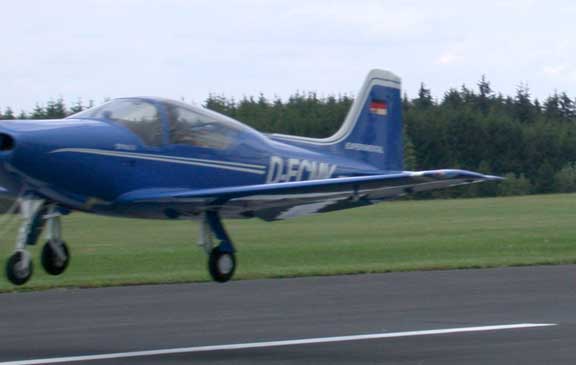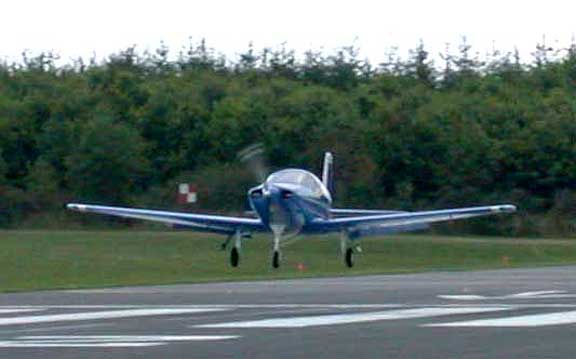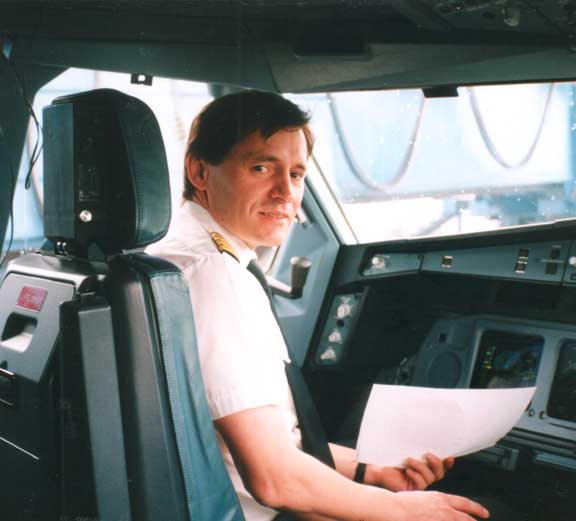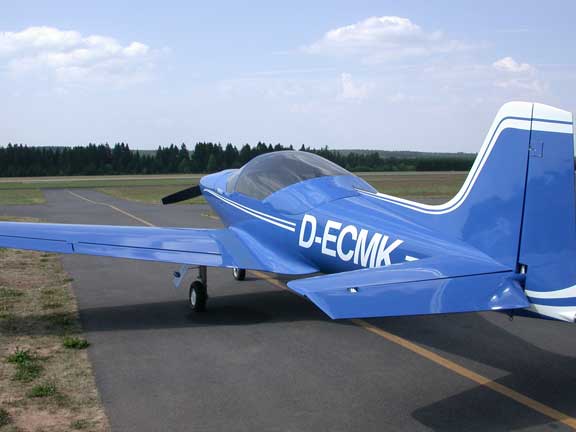The Fullfillment of Perfection
![]()
The Fullfillment of Perfection |
|

|
Cipriano takes off for first flight. |
I carried a parachute on my first flight as recommended. The weather was acceptable with 10 knots headwind light gusts. The takeoff run and directional control was normal, I lifted off at 55 KIAS, at 3:42 PM on August 16, 2004.

|
Touching down on the first landing. |
I had the feeling that I was faster and during climb-out I realized soon that the speed indication was faulty. It was obvious that I was faster than indicated. I retracted the flaps; the gear remained down as planned. Everything else was normal except IAS reading. After an extended pattern I started the approach. Over the fence I had about 65 KIAS and flared down the runway 1000 ft until the airplane settled down.
During the taxi in, I suspected the water drain in the pitot line was leaking. It was a requirement I had to fulfill for the LBA. From experience every junction in the pitot line is a potential leak source. I removed the bottom panels and the water drain valve.
It’s a simple device, which consists of a one-inch long brass tube pushed over the segregated pitot line with a hole on the bottom to remove water from the system. To shut the hole a polyurethane hose is pushed over the brass tube. The tube was too soft, and it was leaking a bit even at low pressure.
I used a stronger hose and took off again. It was a lot better, but the indication was still faulty. I checked the pitot system step by step, every connection I had minor leaks but the real one was on the instrument itself. The pitot and static access ports required an NPT adapter. I did not check the plans yet if there was an adapter required, but I installed one now. The leak rate was over 40 kts per minute before fixing the problem, and I reduced it to the limit of two kts per minute now.
[Cipriano reported that the poly-flo tubing was cracking. It is obvious that his real problem is that he has some of the ‘bad batch’ of poly-flo tubing that we had some years ago.—Scoti]

|
Cipriano Kritzinger in the cockpit of his A330. |
I wrote a test program using the available information from Sequoia and other sources. The program must include all items laid out in the JAR 23 (similar to FAR 23). It is a lot of work. It is divided into seven flight test phases the last phase is reserved for noise measuring. I have the permission to make flight-tests myself which is possible if you have sufficient experience. Performance testing will be done next month, and I will update the builder letter ASAP.
Making the first flight with your homebuilt is a great feeling. I was waiting for it to happen for many years. The first takeoff with my Falco gave me a feeling of pride. I have flown many airplanes, but there is nothing like the Falco. The Falco is the fulfillment of perfection.

|
After writing this article, Cipriano reports, "In the meantime I have about eight hours flight time on my Falco, it's a beautiful airplane. The performance exceeds my expectations. After the third flight I retracted the gear and the speed stabilized at 160 KIAS at 3000 ft pressure altitude and 18° C or 64° Fahrenheit with a power setting of 24/24. After the break-in of my engine, I will start with IAS calibration. The Falco flies straight and level with hands off. There are many people amazed about the Falco." |
|
|